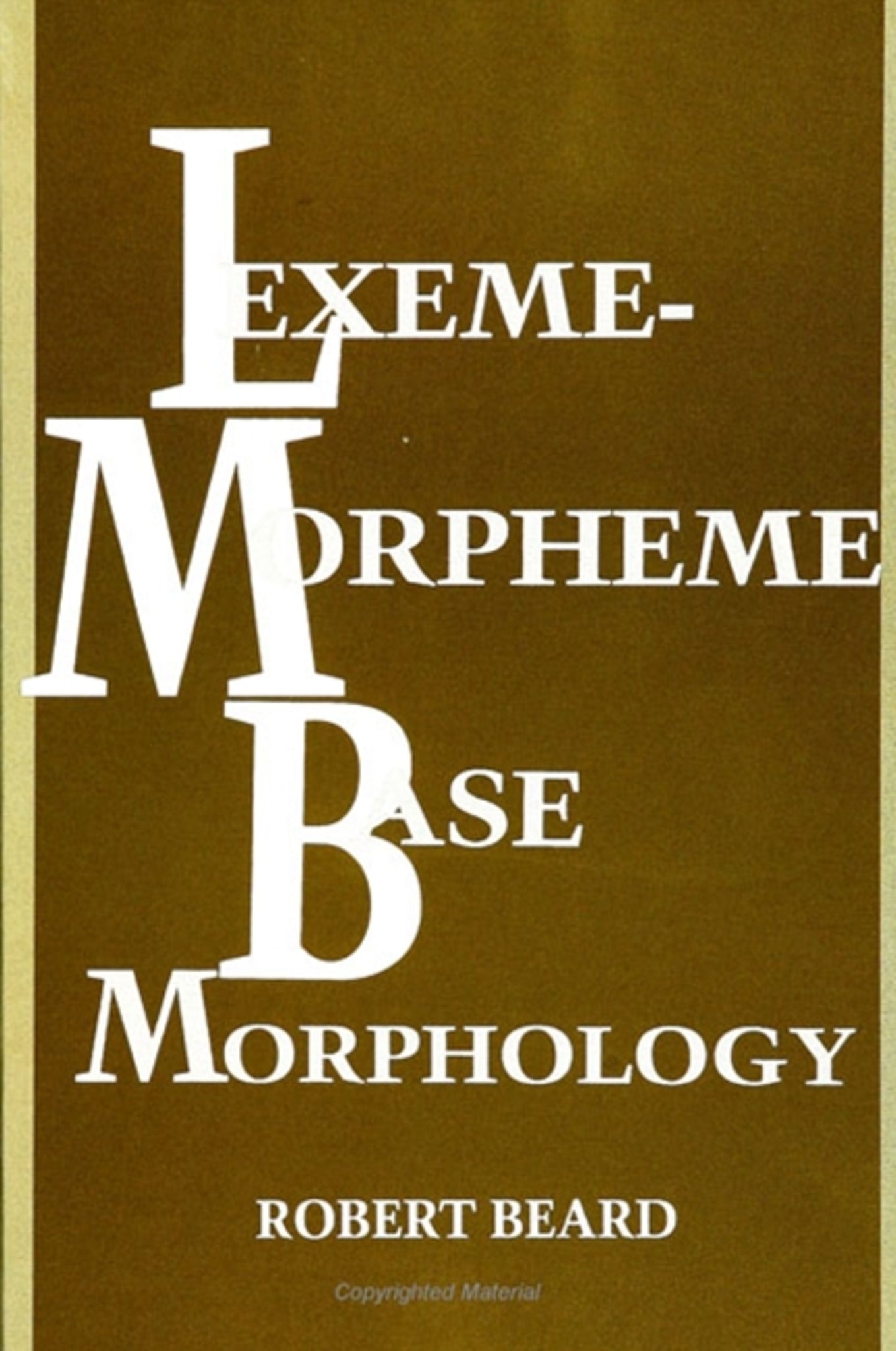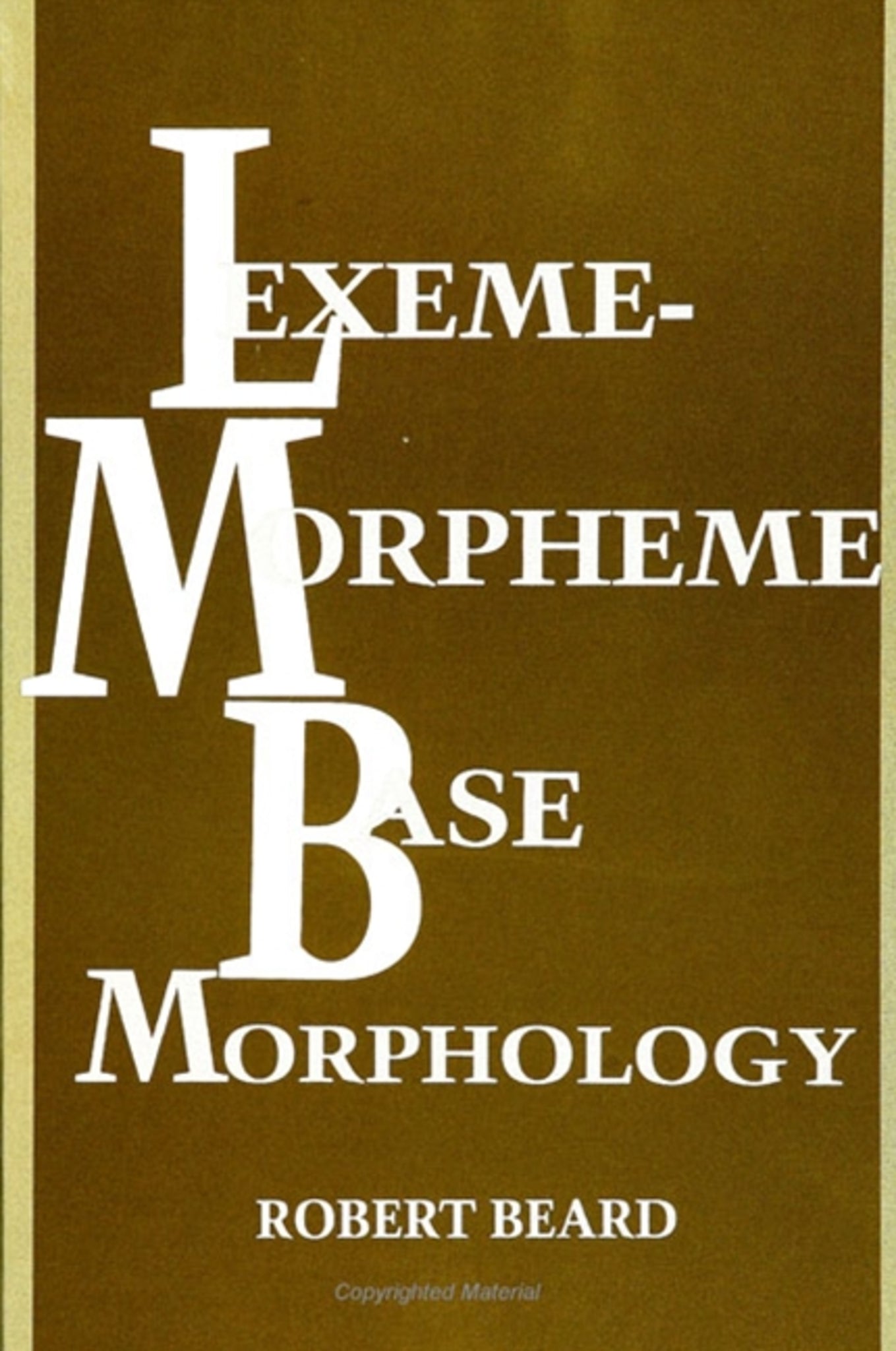We're sorry. An error has occurred
Please cancel or retry.
Lexeme-Morpheme Base Morphology

Some error occured while loading the Quick View. Please close the Quick View and try reloading the page.
Couldn't load pickup availability
- Format:
-
01 July 1995

The first complete theory of the morphology of language, a compendium of information on morphological categories and operations
This book is the first complete theory of the morphology of language. It describes both inflection and lexical word formation, their relation to syntax, phonology, and semantics, and to each other. It enumerates most of the morphological categories of the world's languages, describing their recombinant abilities, and how they are realized in inflectional and lexical derivations.


"Beard tackles an important but long neglected issue in morphological theory: whether there are any general linguistic constraints on the meaning which morphological processes (whether derivational or inflectional) can express, and if so, what the relationship is between possible derivational and possible inflectional meanings. He offers precise answers to these questions, arguing for strong constraints. He also offers an account of the relationship between form and content in affixal morphology from which it emerges as quite natural that there should be widespread mismatches, in contrast to the corresponding relationship for lexical stems." — Andrew Carstairs-McCarthy, University of Canterbury, New Zealand
Acknowledgments
Preface
List of Figures
List of Tables
List of Symbols
1. The Agenda of Morphology
2. The Aristotelean Hypothesis
3. An Outline of Lexeme-Morpheme Base Morphology
4. The Empty Morpheme Entailment
5. Nominal Inflectional Categories
6. Verbal Inflectional Categories
7. Types of Lexical Derivation
8. Transposition
9. Grammatical and Semantic Functions
10. The Syntax and Morphology of Adpositions
11. Case, Case Marking, and Paradigms
12. The Defective Adjective Hypothesis
13. The Unitary Grammatical Function Hypothesis
14. The Base Rule Theory
15. Bound and Free Grammatical Morphemes
16. LMBM and the Agenda of Morphology
Appendix A
The Universal Set of Nominal Grammatical Functions
Appendix B
Productive Yupik Denominal Verbalizations
Appendix C
Chukchee Denominal Verbalizations
Bibliography
Author Index
Language Index
Subject Index



